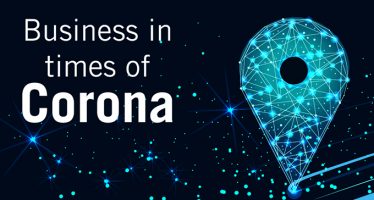Japan Opens the Money Spigot

Japan: Tokyo
Once upon a time, Japan was said to pose a menace to the economic hegemony of the industrialised countries of the West.
Current US criticism of Chinese trade practices and currency manipulation echo the acerbic disputes between Washington and Tokyo of the 1980s and 1990s. At the time, Japan’s outsized current account surplus caused much indignation in the US and Europe.
The overseas expansion of the country’s large corporations, backed by the productivity of their workers and a domestic market all but closed to foreign competition, raised serious concerns and ultimately led to negotiations that forced Japan into a series of concessions which in due time reestablished a trade equilibrium. However, thanks to its purchases of overseas assets, the country managed to sustain a consistent and robust surplus on its current account, resulting in a net international investment position (NIIP) of an estimated $2.8 trillion – by far the largest in the world.
Japan’s remarkable NIIP helps explain why its large public debt, bordering 230 percent of GDP, is not considered problematic. The corona pandemic has prompted the Bank of Japan to significantly expand the monetary stimulus measures already in place whilst the government unveiled fiscal support initiatives worth in excess of $1 trillion. The total of the economic support packages announced now amounts to a staggering $2.2 trillion – some 40 percent of GDP.
This has given a new impulse, and dimension, to ‘Abenomics’, the three-pronged economic policy introduced by Prime Minister Shinzo Abe in 2013 to jolt the country out of economic lethargy – and the liquidity trap. The third vector, structural reform, has been suspended for the duration.
Though it managed to contain the viral outbreak without imposing a general lockdown, the Japanese economy, the third largest in the world, has taken a severe hit with GDP expected to shrink by up to 22 percent in the second quarter for an overall decline of 5 percent for 2020 as forecast by the International Monetary Fund (IMF).
Japan faces a unique set of challenges with an economy that has been in suspended animation for the better part of two decades. Just as the curse of stagflation seemed to have been lifted, the pandemic struck with devastating consequences for the country’s exports. However, domestic business activity has now almost fully returned to pre-corona levels with Google’s Covid-19 Community Mobility Report showing the movement of people in big cities at around 80 percent of levels registered in January and February. Already in the second half of May, consumer spending increased sharply as the state of emergency was lifted in 35 of the country’s 47 prefectures. Both department stores and izakaya, pubs visited after-hours by office workers, registered strong demand.
Government accounts are another story altogether after Prime Minister Abe had two extra budgets approved to deal with the pandemic. This derailed the stated goal of turning the fiscal deficit into a surplus by 2025. Finance Minister Taro Aso called his country’s fiscal situation ‘extremely severe’ but insisted that the original timeline to end deficit spending remains in place. However, officials at the ministry said that a primary fiscal surplus in five years’ time is ‘realistically speaking’ unattainable.
Market watchers fear that the huge extra outlays will still not be enough to prevent a return of deflation, possibly prompting the Bank of Japan to add yet more to its monetary stimuli. Analysts expect core consumer prices, which exclude volatile fresh food but include energy, to fall by 0.5 percent during the current fiscal year ending in March 2021. For the following year, a modest 0.3 percent rise is being forecast.
In a sense, Japan struggles with an economic situation and outlook not entirely dissimilar from the one faced by Europe. There too, years of quantitative easing have failed to spur inflation to any noticeable degree. The spectre of deflation lurks in the shadows even as central bank money spigots flood economies with trillions to stimulate demand. Both the Bank of Japan and the European Central Bank (ECB) have been unable to reach their 2 percent inflation target and are unlikely to succeed any time soon. By now the Bank of Japan’s balance sheet has ballooned to $6.2 trillion. The ECB’s consolidated balance sheet stands at about $5.2 trillion).
Economist expect the Japanese economy to rebound during the second semester but not nearly enough to make up for lost ground. The case of Japan, soon to be emulated in Europe, seems to prove the central tenet of Modern Monetary Theory (MMT) which holds that deficits and money supply do not really matter as long as an economy has not deployed all available labour and material resources. Inflation will only appear after organic growth has exhausted supplies when further expansion would cause excess demand, leading to rising prices or, conversely, a reduction of buying power.
MMT economists argue that with little to no inflation, central banks in most major countries should not hesitate to inject fresh cash into sluggish economies. In fact, long before Milton Friedman unleashed his monetary theories, and his ‘Chicago Boy’ disciples, most central banks were charged not with limiting inflation, but with ensuring near-full employment.
MMT challenges conventional beliefs about the way states interact with their legal tender. Most of those beliefs stem from the gold standard era – now long gone. MMT economists point out that under today’s fiat currency system used by almost all sovereign countries, a government can essentially issue as much money as it needs because, as the sole issuer of currency, the state cannot go broke. In the MMT textbook, public debt merely represents money injected into the economy and not yet taxed out of it.
MMT advocates consider Japan a pioneer – and shining example. The country’s central bank has not stopped jacking up the narrow money supply for close to twenty years. It has done so to keep unemployment levels down and ensure demand stability. MMT proponents do not plead for spending for spending’s sake but for mechanisms that guarantee jobs and income. Thus, modern monetary theory seeks to fight economic downturns with job creation.
Of course, in the real world, issuers of fiat currency enjoy monetary freedom only to the extent that they possess actual and meaningful seigniorage, the ability to tax within their domain. This explains why countries such as Zimbabwe or Venezuela are unable to print money without almost immediately sparking inflation, leading quickly to hyperinflation or a complete loss of confidence in currency as a means of exchange (and not as sometimes thought, a very high rate of inflation).
With untold trillions in overseas assets and a healthy current account surplus, Japan has all the fundamentals in place to leave the pandemic behind and plod along merrily, albeit largely unremarkably. Stagflation is likely to continue to be a defining characteristic of the country´s economy as it may well become a fixture in Europe. In the years before the corona pandemic, growth throughout the European Union had been just about as anaemic as in Japan. Though corona changed everything, it remains highly unlikely that these mature economies will rebound with a vengeance. They will come back, alright, but will do so slowly and carefully.
You may have an interest in also reading…
Chinese Tech Companies Face US Ban
This is perhaps not the best time to confront China. The corona pandemic is far from over and its effects
Bonds: Name of the Game for Cool (and Resilient) Operators
US corporate bonds certainly lack the thrill of that other famous Bond, James. But when it comes to strength and
Business in Times of Corona: Steering Economies by Dead Reckoning
Ridiculed and even vilified last week for refusing to drive interest rates deeper into negative territory, President Christine Lagarde of


















































































